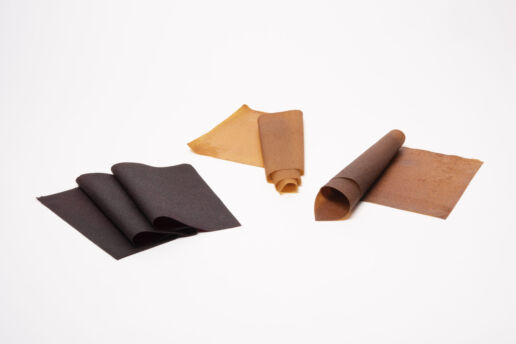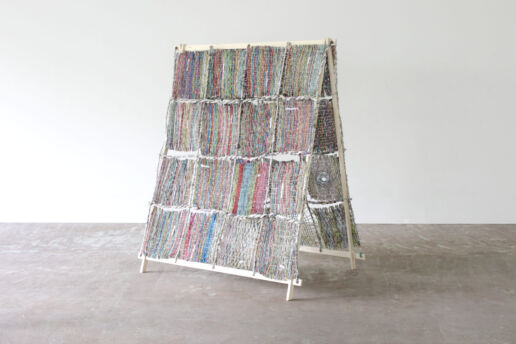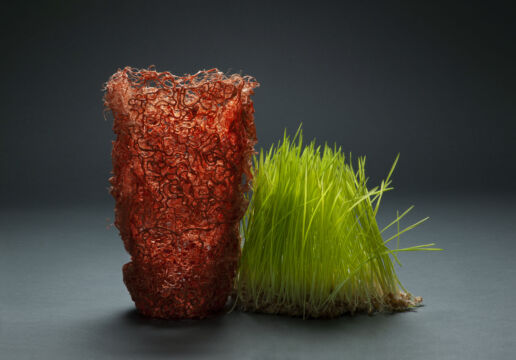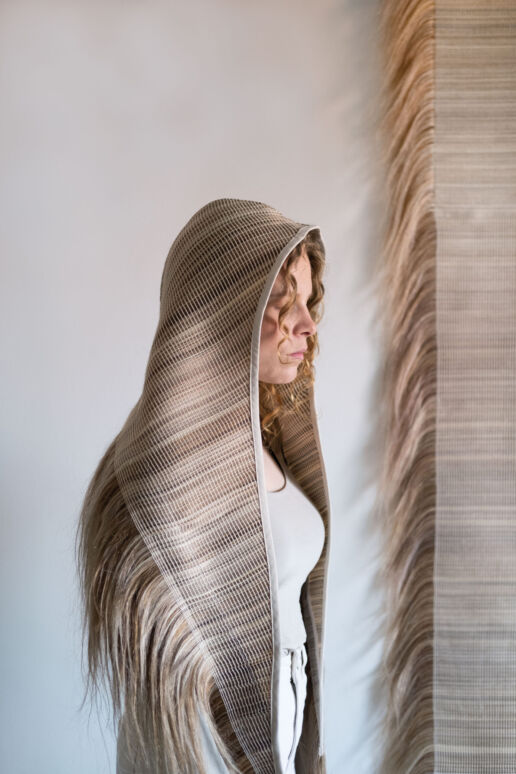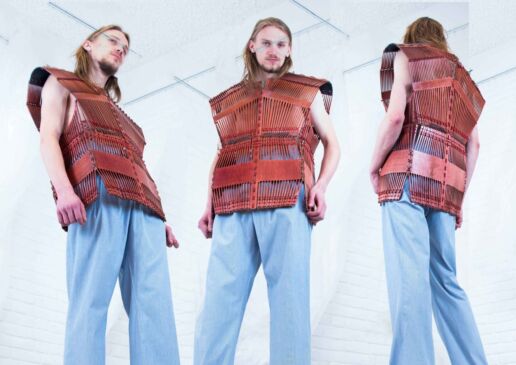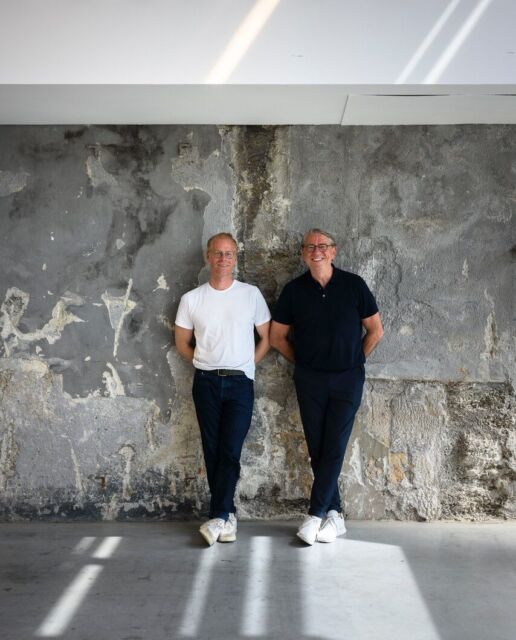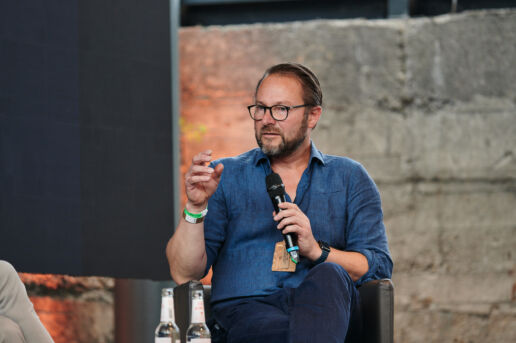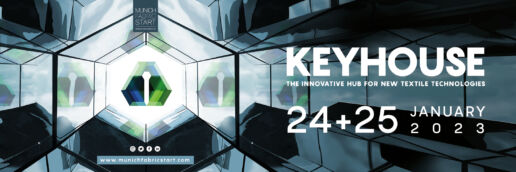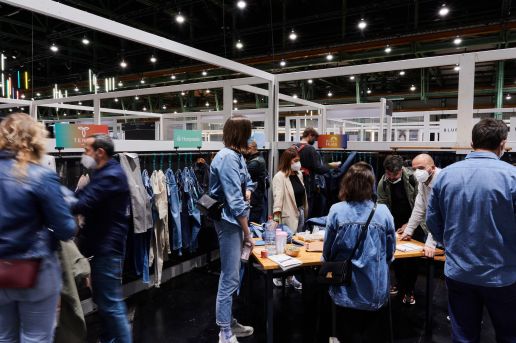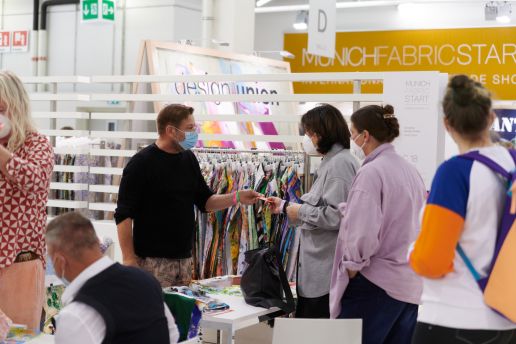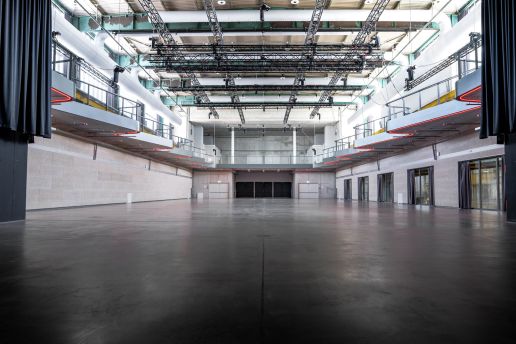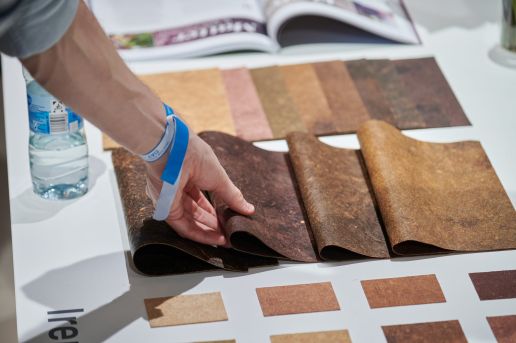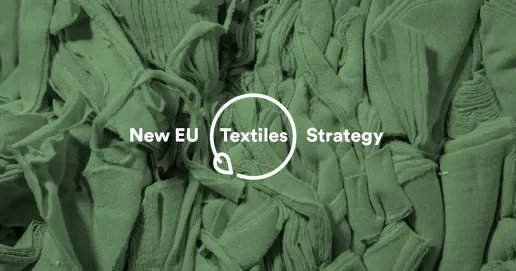Keyhouse
Let's get circular - Sustainable innovations
Using existing resources and creating something new from them: What if you didn’t dispose of the leftovers of freshly squeezed juice – but could create a new material from it? Germany is at the forefront of apple juice consumption, producing up to 200,000 tonnes of pomace per year, solid residues from the pressing process. Instead of reusing them, as has been the case up to now, mainly in biogas plants, for pectin extraction or as animal feed, textile and surface designer Verena Brom has been inspired to develop new material systems for various industries.
The designer studied at the Weißensee Art Academy in Berlin. In the project “A Matter of Fruit“, she produces various biodegradable films from pomace residues that can be used instead of synthetic material. Visually and characteristically, it can be classified as a paper, plastic or leather alternative, depending on its thickness, and offers potential for different areas of application – from interior design to the clothing industry. The material is suitable for laser cutting and engraving, but due to its fusibility it can also be welded or pressed into shape. In addition to the films, Verena Brom has developed a printing paste made from apple pomace that further expands the material’s design possibilities and areas of application.
After the first cycle of use, the material can be returned to the natural loop: For example, it can be turned into a plant pot that biologically decomposes after being potted into the soil. This brings Verena Brohm closer to her goal of using renewable resources – such as the by-products of the food industry – and to use design as a tool to optimise material cycles.
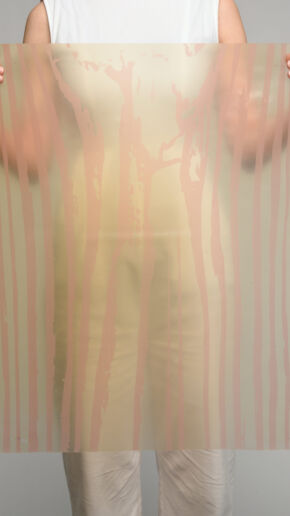
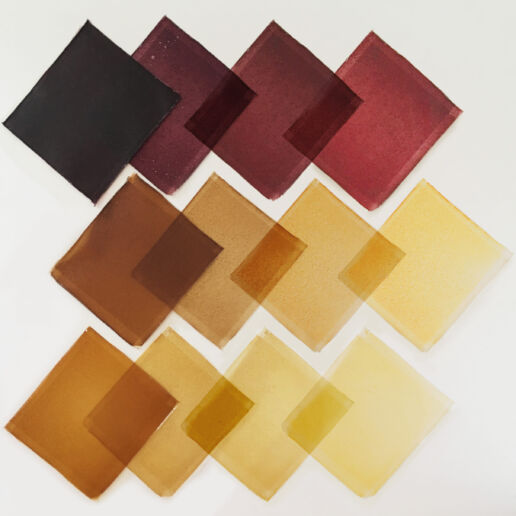
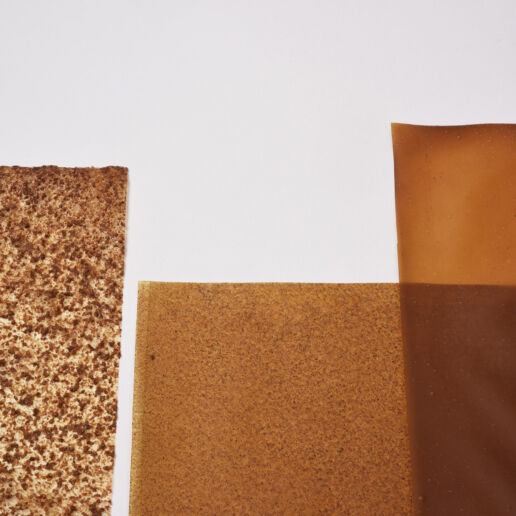
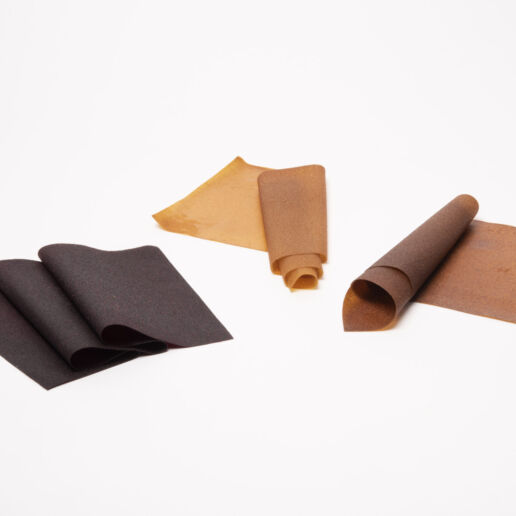
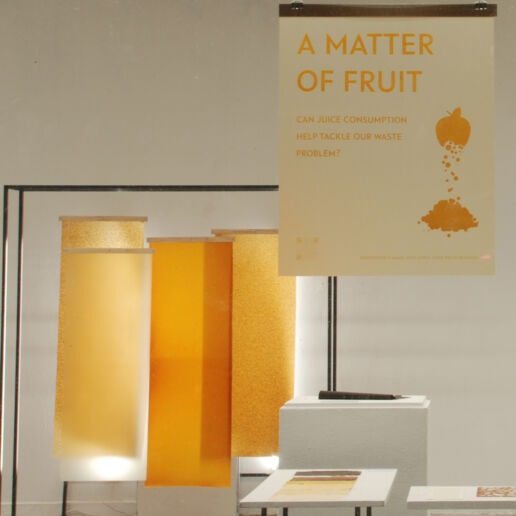
“When developing the material, it was important to use as few additives as possible – and to push boundaries:
how can different properties be developed solely through different processing methods? Using different techniques can expand the
scope for design and influences the haptic and translucency of the material:
from smooth to abrasive, from transparent to opaque – a big variety of options are possible without loosing the mono-materiality.“
———————————————————————–
THIS MIGHT BE ALSO INTERESTING FOR YOU:
SPRING.SUMMER 26 FABRIC HIGHLIGHTS & MATERIAL NOVELTIES – PART IV
14. January 2025
The colour palette of the 2026 summer collection invites you to dream.
Additionals Trends Spring.Summer 26 – Part 5
14. January 2025
Denim is more than just fabric—it is a cultural phenomenon. It represents resilience, creativity, and individuality.
Additionals Trends Spring.Summer 26 – Part 4
13. January 2025
The Hackenberg Textile Group has been your partner for tapes, waistbands, textiles and labels since 1873 and offers textile solutions for all industries.
The New World of Colours - Sustainable innovations
THE NEW WORLD OF colours
MycoColors by Birke Weber and Friederike Hoberg
SUSTAINABLE INNOVATIONS
Dyes play a major role in our daily lives – in the clothes we wear, the cosmetics we use or the food we eat. Most of the dyes we use are of synthetic origin, which poses potential health risks – both in the manufacturing process and in the dyeing process or use. In addition, dyes and pigments in industrial wastewater are not infrequently released into the environment, where they remain and damage ecosystems.
MycoColors, a project by designer Birke Weber and biochemist Friederike Hoberg, addresses precisely this problem. The two are researching the potential of alternative dyes – specifically: from fungi. With MycoColors, they want to develop optimal growth conditions for colour-producing mycelium with the aim of creating a sustainable extraction of dyes and an innovative dyeing process and establishing fungal dyes in the textile and fashion industry. Because: fungi offer a lively, broad colour spectrum that runs through all the colours of the rainbow and is far from being exhausted
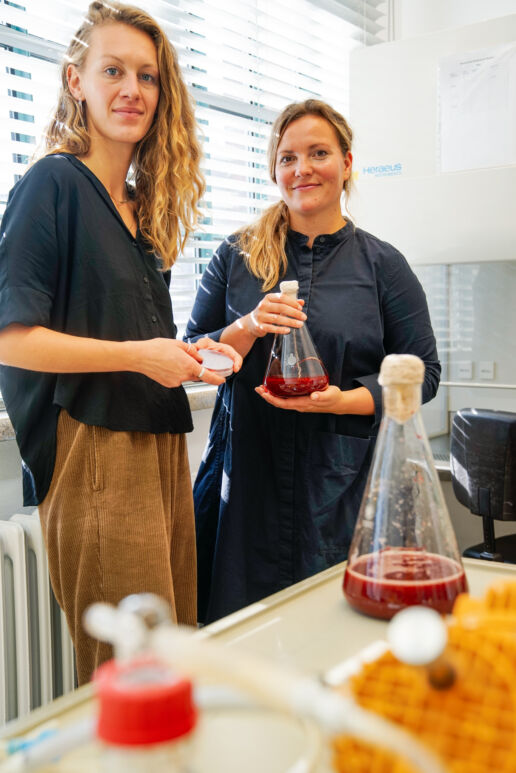

The advantages: The fungal mycelium from which the dyes are extracted grows within just a few days, cultivation takes place in inexpensive culture mediums and production is independent of weather and season. Furthermore, MycoColors works in a closed material cycle: resources such as water and nutrients can be recovered and reused, and by-products such as the biodegradable mycelium can either be returned to nature or upcycled – for example, by using it for paper production.
“The textile and fashion industry uses vast quantities of toxic and carcinogenic chemicals, including synthetic dyes, for its ever-changing
product range. But the end customers cannot trace everything that is hidden in a purchased T-shirt or carpet. A humane and environmentally
friendly alternative made from fungi aims to revise this uncertainty, especially with regard to the colors in a purchased product.”
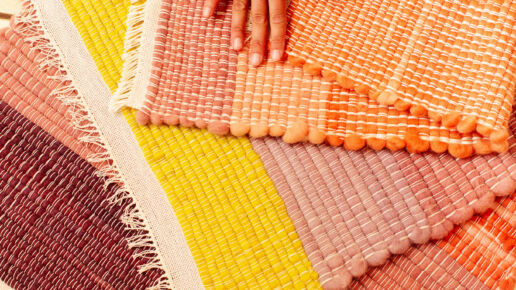
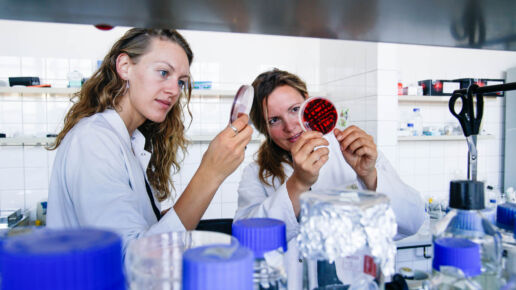
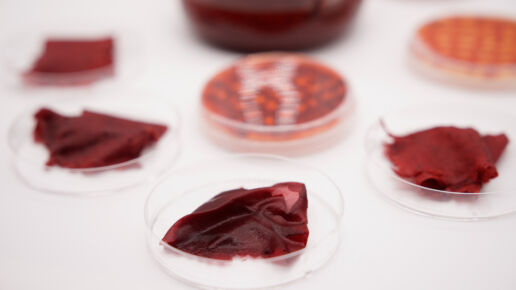
———————————————————————–
THIS MIGHT BE ALSO INTERESTING FOR YOU
SPRING.SUMMER 26 FABRIC HIGHLIGHTS & MATERIAL NOVELTIES – PART IV
14. January 2025
The colour palette of the 2026 summer collection invites you to dream.
Additionals Trends Spring.Summer 26 – Part 5
14. January 2025
Denim is more than just fabric—it is a cultural phenomenon. It represents resilience, creativity, and individuality.
Additionals Trends Spring.Summer 26 – Part 4
13. January 2025
The Hackenberg Textile Group has been your partner for tapes, waistbands, textiles and labels since 1873 and offers textile solutions for all industries.
Collective braiding - Sustainable innovations
A world where everything is becoming faster, more connected and more digital, endless possibilities are emerging. But why always strive for the new instead of continuing the traditional?
Designer Camille Champion has taken note of this development and, during a stay in South Korea, set out to revive interest in traditional craftsmanship.
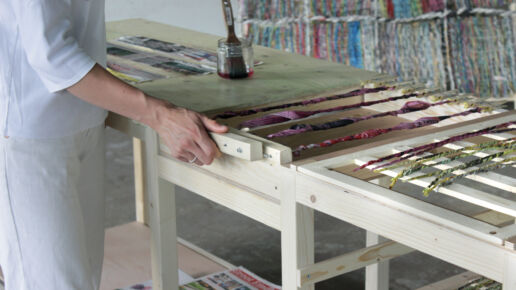
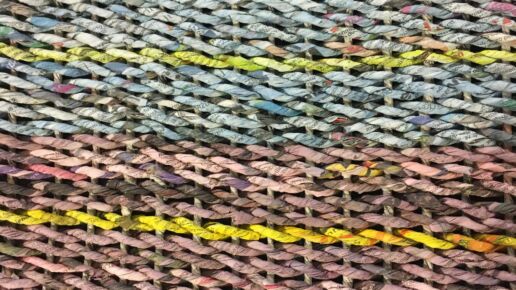
During her travels, she discovered the over 500-year-old technique of jiseung – a process dating back to the Joseon Dynasty that is used to make basketry from old books and paper waste. To do this, the paper is cut into thin strips and then corded. The cords can then be woven into containers such as baskets in various colours and patterns using different basketry techniques.
To save this cultural heritage from extinction, Camille Champion has launched the “Twist and Roll” project, bringing the reuse of newspaper waste to create new objects into a modern Western context: to pass on the craft, the designer has set up a series of workshops to give school children a connection to this tradition. She has designed a small weaving tutorial to teach children to make their own paper threads, weave them on a loom and then collectively build a tent-like structure for their classroom. Twist and Roll combines sustainability, creativity, craft skills and teamwork to show how the education system can benefit from crafts.
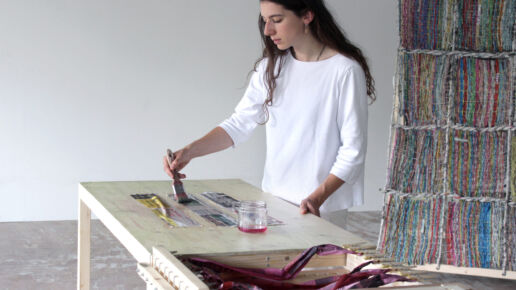
“In my opinion, giving the right tools to the new generations is very important.
Teaching them about materiality, history, or sustainability, will allow them to make the right choices for a better future.”
———————————————————————–
THIS MIGTH BE ALSO INTERESTING FOR YOU
SPRING.SUMMER 26 FABRIC HIGHLIGHTS & MATERIAL NOVELTIES – PART IV
14. January 2025
The colour palette of the 2026 summer collection invites you to dream.
Additionals Trends Spring.Summer 26 – Part 5
14. January 2025
Denim is more than just fabric—it is a cultural phenomenon. It represents resilience, creativity, and individuality.
Additionals Trends Spring.Summer 26 – Part 4
13. January 2025
The Hackenberg Textile Group has been your partner for tapes, waistbands, textiles and labels since 1873 and offers textile solutions for all industries.
Clothes that grow - Sustainable innovations
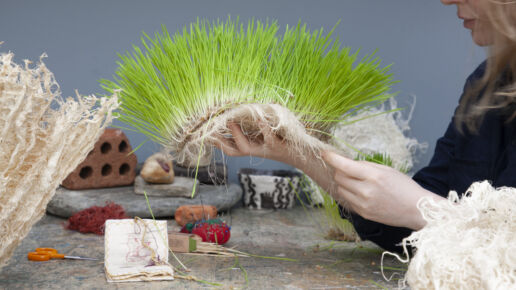
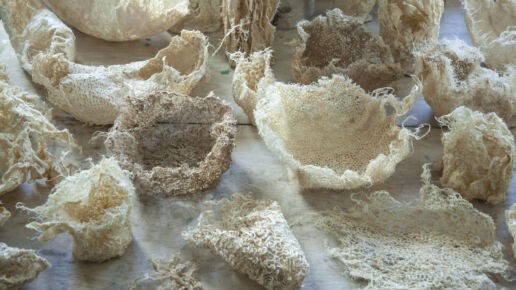
Nature as a 3D printer: material designer and underwater photographer Zena Holloway creates shapes and forms from wheat grass roots that grow in self-carved moulds made of beeswax. The supposed magic lasts for twelve days – the roots spread out horizontally or vertically and make their individual way through the wax templates. Depending on the shape of these, the roots either grow small in a confined space so that they become flat and compact, or if there is more space they can root deeper and three-dimensional shapes emerge. Immediately after harvesting, the roots are heavy and moist, after 24 hours they dry out and become light as a feather.
Each growth cycle produces a different result – all products are therefore individual pieces that can be further shaped by cutting, sewing, tearing or linking. For example, they can be used to create large, hanging structures, to shape vessels or to produce clothing and accessories. The wheatgrass roots also react particularly well to natural dyeing processes. In the name of sustainability: the water that accumulates and runs off during production can be reused and the leftover shoots, seeds or roots can be reused as animal feed. In addition, the dried root is a kind of botanical skeleton that binds carbon. Thus, the Rootful project demonstrates a micro-level approach to solving the complex problem of climate change.
“Growing artefacts from root is the simplest concept but captures the imagination of a wide audience.
I’m learning that root is a wonderful material to create fashion and art, serving to open up conversations around materiality and sustainability that inspire change.“
In the name of sustainability: the water that accumulates and runs off during production can be reused and the leftover shoots, seeds or roots can be reused as animal feed. In addition, the dried root is a kind of botanical skeleton that binds carbon.
Thus, the Rootful project demonstrates a micro-level approach to solving the complex problem of climate change.
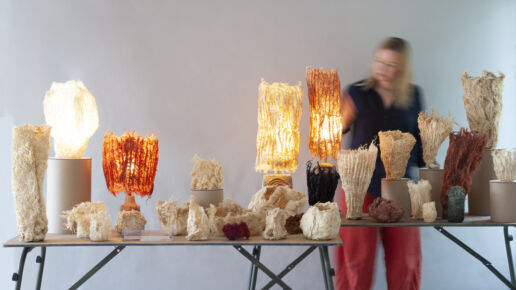
———————————————————————–
THAT MIGHT BE ALSO INTERESTING FOR YOU
SPRING.SUMMER 26 FABRIC HIGHLIGHTS & MATERIAL NOVELTIES – PART IV
14. January 2025
The colour palette of the 2026 summer collection invites you to dream.
Additionals Trends Spring.Summer 26 – Part 5
14. January 2025
Denim is more than just fabric—it is a cultural phenomenon. It represents resilience, creativity, and individuality.
Additionals Trends Spring.Summer 26 – Part 4
13. January 2025
The Hackenberg Textile Group has been your partner for tapes, waistbands, textiles and labels since 1873 and offers textile solutions for all industries.
Hairy affair - Sustainable Innovation
Hair creates identity – we dye it, style it, create new looks and expressions, and associate ourselves with cultural or social groups. It loses meaning and becomes rubbish to be discarded. In her hair project, Savine School gives hair a second life.
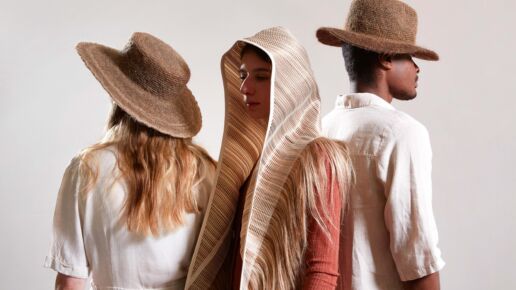
“Haar Haar focuses on the short switch from appreciating hair to feeling disgusted by it, even when it is the same material. It seeks to give a second life
to the material we treasured when it was on our head.“
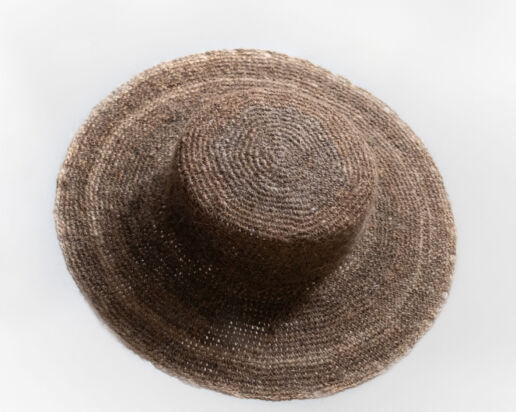
Every month, the textile designer and material researcher collects kilos of hair from various hair salons and extension studios and sorts them by colour and length. In the next step, she uses a machine to spin the hair together with wool into a uniform, flexible yarn. This yarn highlights the properties of both materials: the admixed wool offers the possibility to work with other tones beyond the hair colours, while the reflection of light on the hair provides a beautiful shimmer.
The designer uses the yarn to produce stylish accessories, such as crocheted hats – which at first glance have nothing to do with what ends up on the floor during a visit to the hairdresser. In this way, Savine Schoorl makes it clear that hair is a valuable resource and gives people the opportunity to discover the value of supposed waste in its second life cycle.
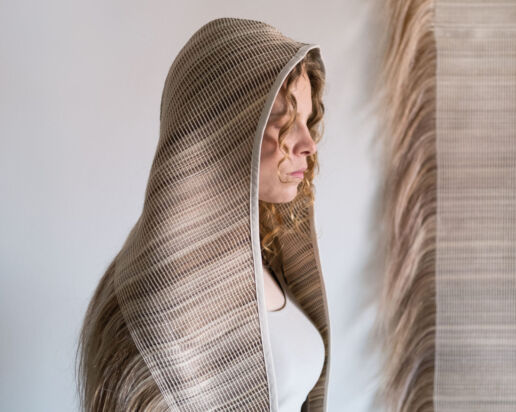
———————————————————————–
THIS MIGHT BE ALSO INTERESTING FOR YOU:
SPRING.SUMMER 26 FABRIC HIGHLIGHTS & MATERIAL NOVELTIES – PART IV
14. January 2025
The colour palette of the 2026 summer collection invites you to dream.
Additionals Trends Spring.Summer 26 – Part 5
14. January 2025
Denim is more than just fabric—it is a cultural phenomenon. It represents resilience, creativity, and individuality.
Additionals Trends Spring.Summer 26 – Part 4
13. January 2025
The Hackenberg Textile Group has been your partner for tapes, waistbands, textiles and labels since 1873 and offers textile solutions for all industries.
A Suit of Armour - Sustainable innovations
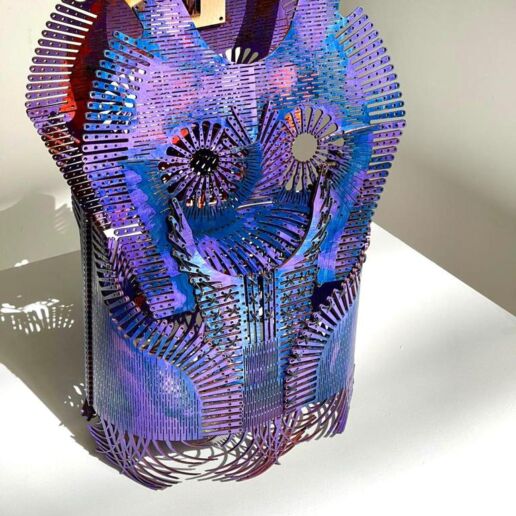
The name says it all: “Choub” means “wood” in Farsi – the material that designer Mehdi Mashayekhi draws on in his project Choub and uses innovative methods to create something new: Using digital fabrication, he has designed an abstract clothing collection for which he deconstructs the wood, giving the material new physical properties such as flexibility and stretchability.
The designer resorts to two methods: with topology optimisation, a computer-based process, he uses algorithmic models to determine the optimal shape of components in terms of load limits. The generative design method also creates new, powerful design options with the help of artificial intelligence. In this way, Mehdi Mashayekhi succeeds in solving complex requirements, distributing the weight of components and reducing manufacturing costs.
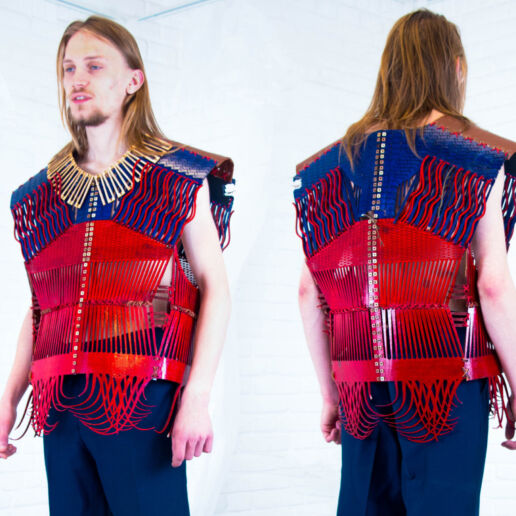
“Design is a glowing point in the cross-point between art and science, where reality meets vision.”
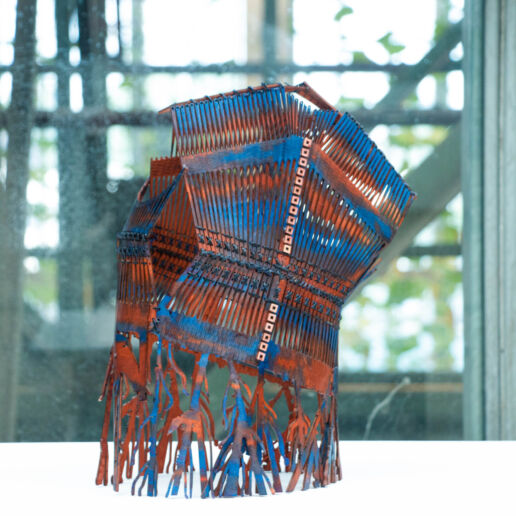
Innovative, unconventional, visionary: In the Choub project, 6mm thick plywood is used to create armour-like, portable constructions in which the wood loses its hardness and becomes flexible. Win-win: The designer optimises the use of materials in the design and at the same time provides a solution for upcycling waste. With the use of digital manufacturing, Mehdi Mashayekhi is helping to drive circularity and strengthen openness to materials and technical textiles.
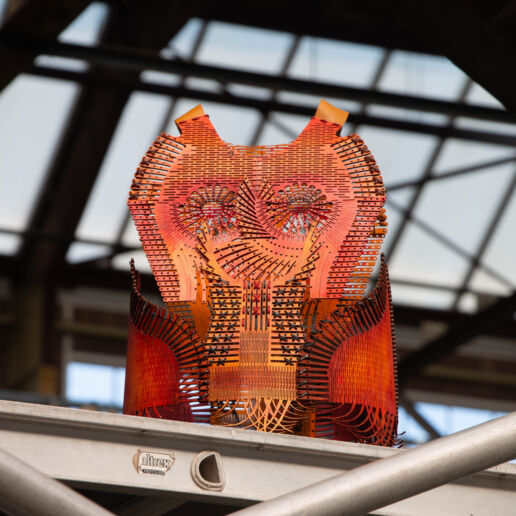
———————————————————————–
THIS MIGHT BE ALSO INTERESTING FOR YOU
SPRING.SUMMER 26 FABRIC HIGHLIGHTS & MATERIAL NOVELTIES – PART IV
14. January 2025
The colour palette of the 2026 summer collection invites you to dream.
Additionals Trends Spring.Summer 26 – Part 5
14. January 2025
Denim is more than just fabric—it is a cultural phenomenon. It represents resilience, creativity, and individuality.
Additionals Trends Spring.Summer 26 – Part 4
13. January 2025
The Hackenberg Textile Group has been your partner for tapes, waistbands, textiles and labels since 1873 and offers textile solutions for all industries.
Textile Innovations: Ready To Be Supercharged in 2023?
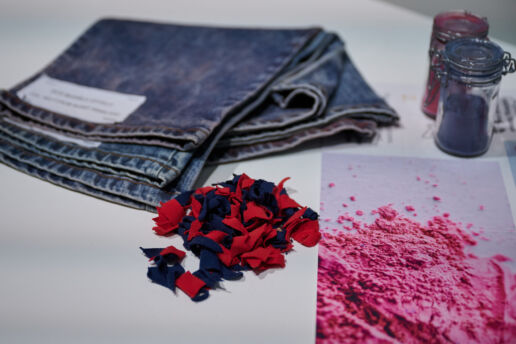
When it comes to textiles, one of the biggest challenges has been the industry taking on the responsibility to examine its processes. Although a necessary step, it is not an easy one for an industry built on foundations that date back to the mid-1700s industrial revolution. The good news is that with the help of new technology, the textiles industry is beginning to become better equipped to address most of the pain points in its supply chain, and in 2023 we may actually witness more innovations than ever being accelerated and scaled.
What To Expect in 2023
In the last few years, a shift in values has been redefining the textile industry. It is a shift driven by various technological solutions created to transform the global textile industry, so businesses can reach their sustainability and circularity goals and also understand the role that policy will most likely play in pushing value-driven fabrics forward.
So with innovation as its backbone, what can industry players seeking a more constructive view of the textile market expect in 2023?
Well, here is an overview of what is expected from the textiles space in 2023:
- There will be an acceleration and scaling of textile technologies that will position companies, small and midsize players, to explore further innovations that will help them align their business so they can adapt their practices and commit long-term.
- New fabrics will no longer survive but thrive as more research into sustainable materials and technologies increases and more brands continue to invest in sustainable and safer innovations.
- The textile industry in 2023 is expected to focus less on decadence and more on authenticity.
- We will witness the adoption of new business models that support sustainability initiatives — including supply chain traceability and the reduction of material usage.
- One of the growth drivers of the global textile market will be increasing demand for environmentally friendly and readily available natural fibres. In addition, more performance and technical fabrics will lean towards natural fibres.
- In 2023, more governments will start imposing stringent regulations. As a result, there will be more pressure on textile manufacturers to be less scattered and unorganised, especially when using toxic dyeing chemicals.
- The landscape will see an increase in market players whose USPs will be strongly driven by new technology and innovations. With a competitive edge, these material innovators bring new growth opportunities and strategies to the market.
- The textiles industry will continue to face materials, manufacturing and sustainability challenges in 2023. However, the good news is that the solutions that will continue to be explored in 2023 will be of a collaborative kind.
- Regarding future proofing manufacturing, 2023 strategies will push forward new research around new materials, digital manufacturing and sustainability for future textiles. In addition, textile manufacturers will create new supply chain models based on vertical integration, nearshoring, and small-batch production.
- In 2023, expect speed and agility to effectively tackle the challenges that slow down the growth of the textile and garment industry.
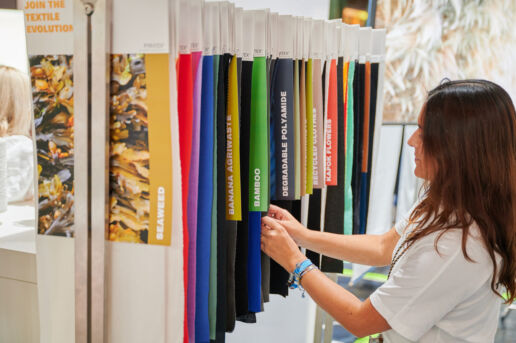
If you take away one thing, let it be this:
don’t be scared by the threat of new textile legislation distracted by the predicted digital shakedown or exhausted by the growing customer demands for sustainability.
Instead, ask yourself, if the future is promised to those who can ride through the challenges by embracing technology across their supply chain, can I afford to shy away from strategically sharpening my approach to the innovative dynamics driving the textile industry in 2023?
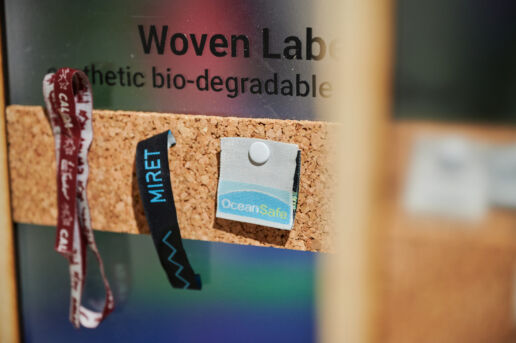
Are you interested in more in-depth facts and figures on the new textile economy?
Visit the Shape Innovate Lounge in H5 | 04 or attend the mini-lectures in the Keyhouse.
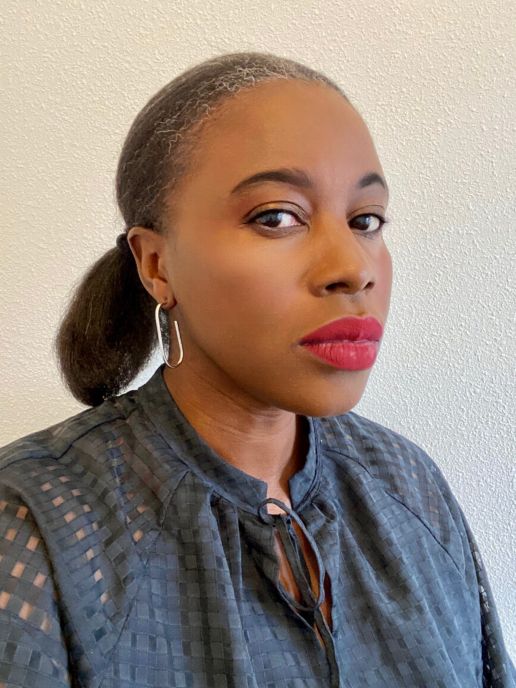
About the author
Founding editor-in-chief of Shape Innovate, Muchaneta has worked in the fashion industry for over 14 years. She is currently one of the leading influencers speaking and writing about the merger of fashion with technology and wearable technology.
Muchaneta ten Napel | m@shapeinnovate.com
This might be also interesting for you
MUNICH FABRIC START & BLUEZONE – Essential and efficient
5. September 2024
INTUITION means that we have the courage to rely on our inner voice instead of just relying on hard facts and data. An interview with the organisers of MUNICH FABRIC START.
Navigating the Future of Sustainable Innovation
3. September 2024
This season, we're continuing this saga by posing critical questions and embracing a more holistic narrative. It’s less about solutions and more about interventions and transformative thinking.
INTUITION – In conversation with the organisers of MUNICH FABRIC START about the zeitgeist, trade shows and new chances
3. September 2024
INTUITION means that we have the courage to rely on our inner voice instead of just relying on hard facts and data. An interview with the organisers of MUNICH FABRIC START.
FABRIC HIGHLIGHTS & MATERIAL NOVELTIES FOR AUTUMN.WINTER 25/26 – PART VIII
3. September 2024
The claim “The best made by our hands” highlight the importance of our partners to create an high quality fabric giving the best service possible.
New Fabric Collection by BUNTASTIC
3. September 2024
Buntastic Design Studio has put together for us a “bowl” of fresh design ingredients for fall/winter 2025.
FABRIC HIGHLIGHTS & MATERIAL NOVELTIES FOR AUTUMN.WINTER 25/26 – PART VII
2. September 2024
This quality is suitable for the toddler sector thanks to its special softness and Gots certification, but also for the wintry adult outdoor sector thanks to its particularly warming properties combined with light weight.
Additionals Trends Autumn.Winter 25/26 – Part 6
2. September 2024
We Nordic Label Studios is recognized for its innovation, craftsmanship, sustainability, and compliance.
BLUEZONE NEWS FOR SEPTEMBER 2024 – PART IV
1. September 2024
Timeless is a new concept from Tejidos Royo that represents the creation of high-quality garments with less impact on the planet, ...
FABRIC HIGHLIGHTS & MATERIAL NOVELTIES FOR AUTUMN.WINTER 25/26 – PART VI
1. September 2024
Manifattura di Carmignano is more than a textile company: it is a core group of people united by a passion for excellence and an unwavering commitment to sustainability.
KEYHOUSE NEWS – MOMENTUM
1. September 2024
Momentum plays a crucial role by providing the technology to create and manage these digital passports for fashion brands & suppliers ensuring compliance and fostering circular product development.
"How do our actions contribute to the better?"
What is currently happening in the industry of innovators, transformers and forwardthinkers?
Different developments can be observed – especially when it comes to upcoming designers and creators, which is very interesting yet inspiring. Newcomers are about either entering the industry or creating their own one; furthermore, they all developed a very high professionalism in everything they do and how they present their ideas. Storytelling matters, that’s why we see crafts that concern and that communicate about thoughts, materials and backgrounds. They somehow reflect on the state of the industry and/or they question current systems. Just with the eye on possibilities, not to add critique. It is a friendly way to inspire.
You just said creators are “entering the industry or creating their own one”. What do you mean by that?
Well, actually right as I say. Either people and ideas enter an industry OR they create an industry. Entering means that designers or creators just fit into an industry and can get part of it or they can develop their own techniques and make it scalable and somehow create their own. Let me give you an example: WINT Design Lab discovered a new material and also discovered how to use it in order to make it relevant for the market. Either they can enter the industry OR if they find possibilities to cover all the needs within the supply chain and develop the machines to produce in a big scale, they could go big and just create their own industry.

Simon Angel
What other developments can you identify?
Back in the days, let’s say about five years ago, there was mainly one person behind a new idea that was working within a tiny studio. Compared to that, everything is so much more professional: being a material designer, you can have a studio and work with employees who assist. That is nowadays how designers get ready to present their idea to the market. You need people who bridge the gap between the studio and the market. I personally recognize a huge potential in this point of professionalism, because people get ready to connect – young designers now offer representative samples and get in touch with the industry on a very professional level. Newcomers inspire the industry.

What sounds very interesting. What do the newcomers do differently?
Things that impress the industry: crafts that concern and communicate. The designers and their innovations want to tell us stories: it’s about the material, systems (and old behaviours) but also the designs. We can get glimpses into cultural backgrounds, different techniques, social aspects and so much more. For example, the project “Rootful” by Zena Holloway and the project “Choub” by Mehdi Mashayekhi show off how to create a material out of seagrass or wood with the implemented idea to use the finished garment or the designs as tools to communicate.
That’s a positive development, isn’t it?
Yes, it is. But one thing should not be forgotten: we are in the middle of a delicate discussion on the urgency of creating, within that everybody has to
put their own position into a fresh perspective. I sometimes find it important to take a bit of a distance and ask rhetorically questions like: So what? We are
leaving the era of RE-thinking we are entering an era of PRE-thinking. We can challenge ourselves in critical self-reflection with a future smile.
We should not design just to be a designer or cook just for the sake of being a chef. We should not create just to be a creator. We should not just buy new stuff, only for the sake of being a consumer. Way more, we should cook when people need food, design when designs are not good enough and create when the world needs a new product. Let’s stay critical and ask ourselves over and over again: how do our actions contribute to the better?
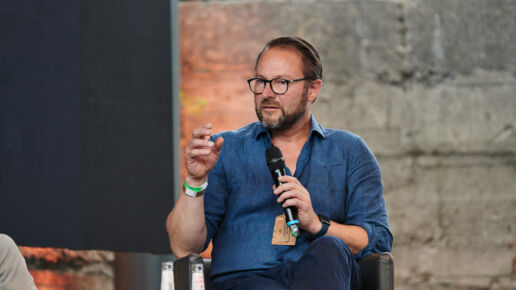
EXPOLRE AND GET INSPIRTED AT MUNICH FABRIC START
IN THE SUSTAINABLE INNOVATIONS AREA AT KEYHOUSE – H5!
Discover more industry-changing innovations at our upcoming trade shows:
The atmospherica industrial charm of keyhouse
In the atmospheric industrial charm of KEYHOUSE, Hall 5, progressive suppliers and global players from cross-industry sectors will be showing their latest new developments and innovations. On more than 1,000 square metres you will find trend-setting smart textiles, future fabrics and new technologies – be it in terms of sustainability, digitalisation, traceability, technology or finishing.
Staged as an interactive think tank, future-oriented show cases will be in the spotlight alongside Sustainable Innovations. This is also where the main lecture forum of MUNICH FABRIC START is located featuring exclusive keynotes, panel discussions, trend presentations, Q&A sessions and expert talks by international industry insiders. Be inspired by the wide range of products on offer at KEYHOUSE.
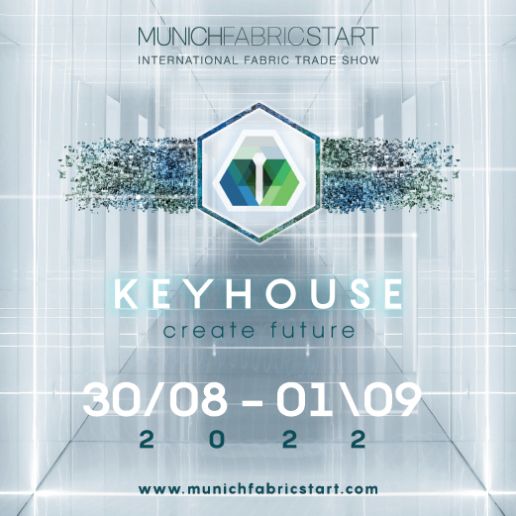
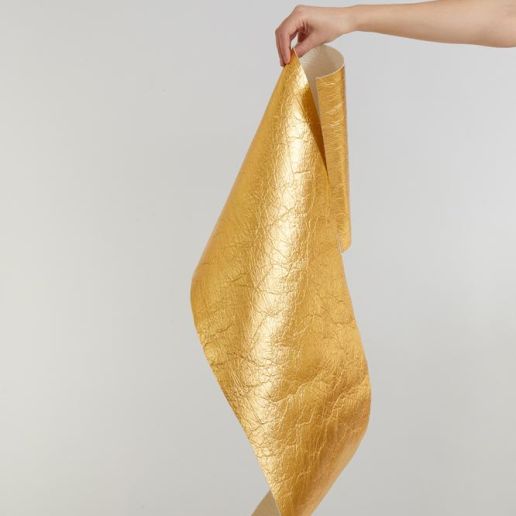
PIÑATEX
Piñatex® by Ananas Anam is a pioneering plant-based textile now made from up to 95% renewable resources. Piñatex is made from agricultural waste, offering a resource efficient alternative to synthetic and virgin grown textiles. Piñatex is available in 22 colours across 4 different collections, with the ability to create custom finishes for orders requiring a bespoke approach
REACTIVE REALITY
Reactive Reality’s PICTOFiT platform creates value for you, your customers and the planet. Their AI can help in all phases of the product lifecycle from design to visual merchandising to shopper experience, purchase and in the Metaverse. To date we have seen increases in shopper engagement of 400%, increases in conversion rate of 55%, and an overall ROI of 500%
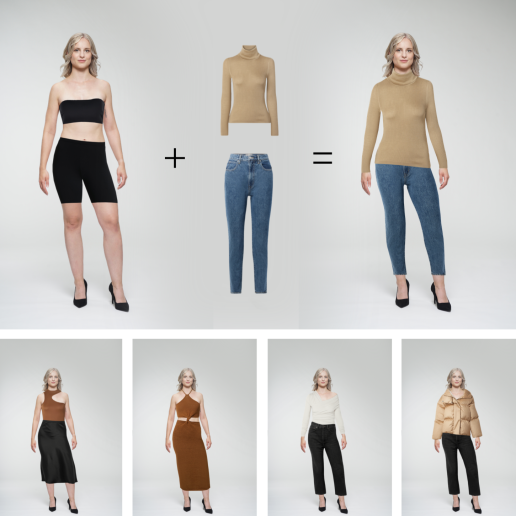
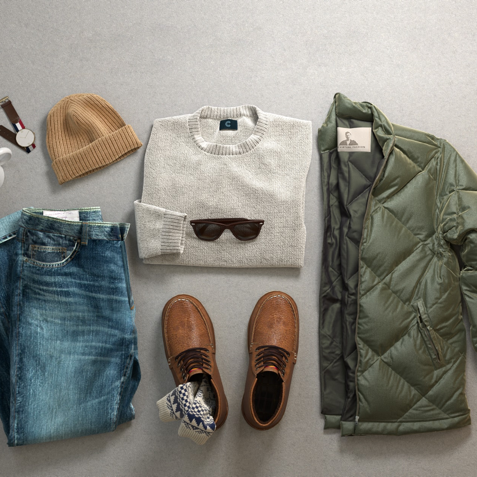
CLO Virtual Fashion
CLO Virtual Fashion is a multinational technology company founded in 2009. With a vision to empower everything related to garments, CLO Virtual Fashion is leading the market by digitally merging, consolidating, and converging all components relating to digital and physical garments through its state-of-the-art 3D Cloth Simulation Algorithm. From 3D garment design software, digital asset management and design development collaborative platform, to consumer-facing services such as virtual fitting on e-commerce, all of CLO Virtual Fashion’s products and services are interconnected to provide clients and users with a more consolidated experience.
MAKEINITALY
MAKEINITALY is a group of technicians in love with a project dedicated to “The Health of the garment we are wearing”. Their innovation is to respect the nature with the re-discovery of traditional Italian textile knowledge. They produce nettle and hemp yarn to create biodegradable fabrics. Dyeing of the fabrics is made with their patent by using vegetable products that reach high and permanent colour fastness.
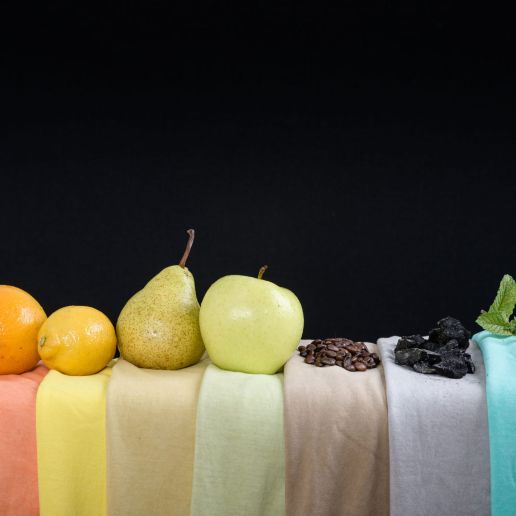
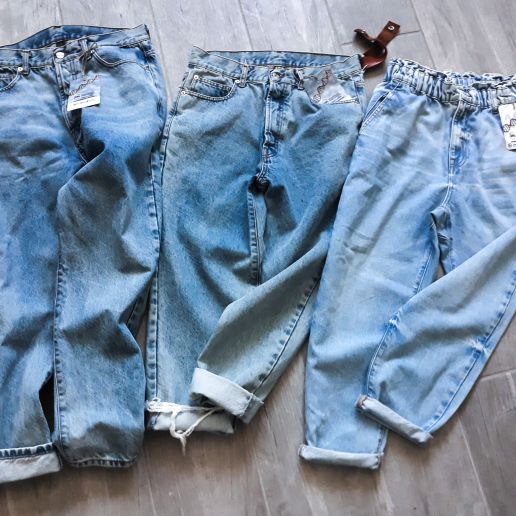
MONTEGA
Montega Chemical Solutions, specialized in production of chemicals for textile treatments, will present THE PERFECT JEANS for a more conscious use of chemicals through application systems with low environmental impact and certified products. This in order to provide guidelines for a more sustainable and truly environmentally friendly production, to be an active part of the change that our planet asks for every day. Find out mor about their solutions and services on their booth at the KEYHOUSE.
EVENT PROGRAM
OF MUNICH FABRIC START & BLUEZONE
AT KEYHOUSE, HALL 5 & THE SEMINAR ZONE, HALL 7
Be inspired by exclusive keynotes, panel discussions, trend presentations, Q&A sessions & Co. by international industry experts.
Look forward to news, insights and first-hand information from the industry.
Discover further industry-disrupting innovations at our upcoming shows:
The New EU Textiles Strategy: 15 Things You Need To Know
The New EU Textiles Strategy: 15 Things You Need To Know
A contribution of Muchaneta ten Napel, Founding Editor-in-Chief FashNerd.com
The fashion industry produces 92 million tonnes of waste. It is also responsible for 10% of the world’s carbon emissions. The ugly truth is that the way that the fashion industry does business is making an unsustainable impact on natural resources and the environment at each stage of the supply chain.
So what can be done to minimise an industry-wide problem’s carbon and environmental footprints? Well, this is where the new EU Strategy for Sustainable and Circular Textiles comes into play.
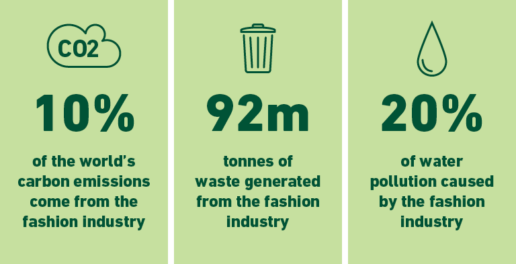

Is It Empowering the Green Transition?
More than just another set of rigid rules, the new EU textiles strategy is driven to address the need for businesses to take responsibility and act to minimise their carbon and environmental footprints. Proposed by the EU Commission, the plan has been set up to help the EU shift to a circular economy that can tackle fast fashion, textile waste and the destruction of unsold textiles. The strategy also aims to encourage businesses to participate actively in the co-creation process through their commitments to circularity and circular business models.
As part of the EU Green Deal, the strategy proposes to make sustainable products “the norm in the EU.” Pushing forward the idea that all production fully respects social rights, the plan also calls on companies to make textiles more durable, repairable, reusable and recyclable.
Bringing attention to a product’s lifecycle, the strategy focuses on design through to end-of-life. The agenda is to kickstart actions that ensure that by 2030 textile products placed on the EU market will be more eco-friendly and long-lasting.
With so much change promised, the Commission’s proposal of new rules can be complex for some to unpack. So here are ten things you need to know about the new EU Strategy for Sustainable and Circular Textiles.
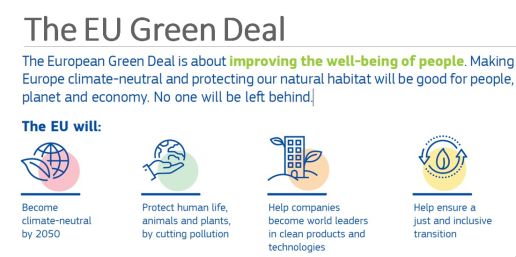
15 Things you need to know
- The new strategy is part of a much broader package, including as many as 16 new legislative actions and other policies that will directly impact the textile value chain.
- Create a model of thriving green and digital transition in manufacturing.
- The strategy will require manufacturers to give consumers more information on how to reuse, repair and recycle clothing.
- The goal is to phase out fast fashion and have more businesses commit to business models that allow for the reuse and repair of products to be widely available.
- In the textile sector, the strategy hopes producers will take responsibility for their products along the value chain, including when they become waste.
- Promoting the circular textiles ecosystem, the EU textiles strategy aims to support and accompany the textiles ecosystem throughout its transformative journey.
- By supporting innovative fibre-to-fibre recycling, the plan is to reduce, to a minimum, the incineration and landfilling of textile waste.
- Solutions and measures include more precise information, a Digital Product Passport and a mandatory EU extended producer responsibility scheme.
- The strategy highlights the need for accuracy regarding green claims by proposing new consumer rights and a ban on greenwashing.
- Reverse overproduction and overconsumption, and discourage the destruction of unsold or returned textiles.
- Propose mandatory Extended Producer Responsibility for textiles with eco- modulation of fees.
- Address the unintentional release of microplastics from synthetic textiles.
- Restrict the export of textile waste and promote sustainable textiles globally.
- Incentivise circular business models, including reuse and repair services.
- Adopt favourable taxation measures for the reuse and repair sector. Lastly, the new EU Strategy for Sustainable and Circular Textiles end game is to make the EU market more friendly to the environment, circular, and energy-efficient and bring balance back to global supply chains. So to conclude, yes, the EU textiles sustainability strategy is very ambitious, but this is why it is critical that it is implemented correctly.
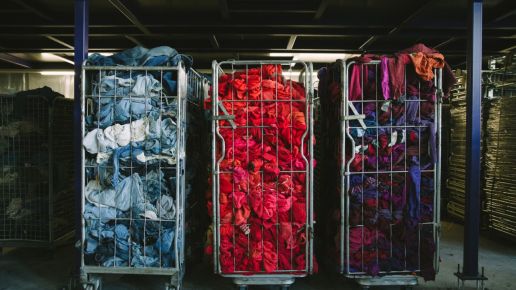
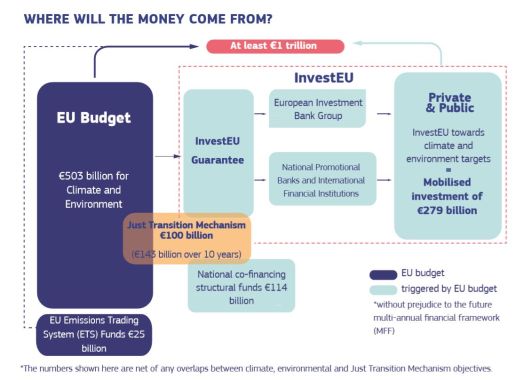
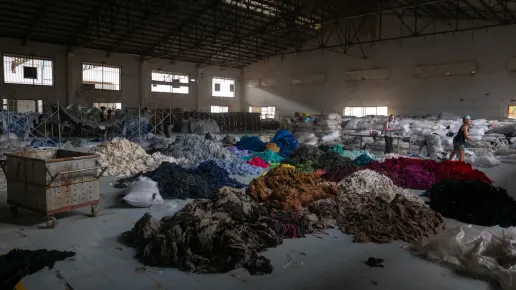
Are you interested in more in-depth facts and figures of the new textile economy?
Visit the FashNerd.com Lounge at H5 | 28 or join their mini lectures Keyhouse.

About the author
Founding editor-in-chief of FashNerd.com, Muchaneta has worked in the fashion industry for over 14 years. She is currently one of the leading influencers speaking and writing about the merger of fashion with technology and wearable technology.
Muchaneta ten Napel | editor@fashnerd.com
THIS MIGHT BE ALSO INTERESTING FOR YOU
MUNICH FABRIC START & BLUEZONE – Essential and efficient
5. September 2024
INTUITION means that we have the courage to rely on our inner voice instead of just relying on hard facts and data. An interview with the organisers of MUNICH FABRIC START.
Navigating the Future of Sustainable Innovation
3. September 2024
This season, we're continuing this saga by posing critical questions and embracing a more holistic narrative. It’s less about solutions and more about interventions and transformative thinking.
INTUITION – In conversation with the organisers of MUNICH FABRIC START about the zeitgeist, trade shows and new chances
3. September 2024
INTUITION means that we have the courage to rely on our inner voice instead of just relying on hard facts and data. An interview with the organisers of MUNICH FABRIC START.
FABRIC HIGHLIGHTS & MATERIAL NOVELTIES FOR AUTUMN.WINTER 25/26 – PART VIII
3. September 2024
The claim “The best made by our hands” highlight the importance of our partners to create an high quality fabric giving the best service possible.
New Fabric Collection by BUNTASTIC
3. September 2024
Buntastic Design Studio has put together for us a “bowl” of fresh design ingredients for fall/winter 2025.
FABRIC HIGHLIGHTS & MATERIAL NOVELTIES FOR AUTUMN.WINTER 25/26 – PART VII
2. September 2024
This quality is suitable for the toddler sector thanks to its special softness and Gots certification, but also for the wintry adult outdoor sector thanks to its particularly warming properties combined with light weight.
Additionals Trends Autumn.Winter 25/26 – Part 6
2. September 2024
We Nordic Label Studios is recognized for its innovation, craftsmanship, sustainability, and compliance.
BLUEZONE NEWS FOR SEPTEMBER 2024 – PART IV
1. September 2024
Timeless is a new concept from Tejidos Royo that represents the creation of high-quality garments with less impact on the planet, ...
FABRIC HIGHLIGHTS & MATERIAL NOVELTIES FOR AUTUMN.WINTER 25/26 – PART VI
1. September 2024
Manifattura di Carmignano is more than a textile company: it is a core group of people united by a passion for excellence and an unwavering commitment to sustainability.
KEYHOUSE NEWS – MOMENTUM
1. September 2024
Momentum plays a crucial role by providing the technology to create and manage these digital passports for fashion brands & suppliers ensuring compliance and fostering circular product development.


